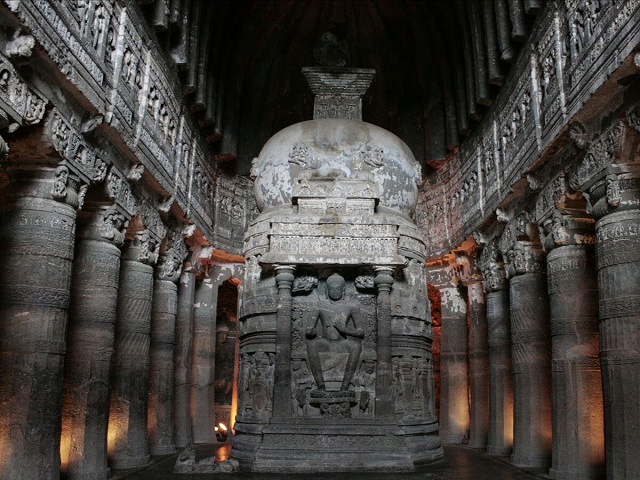
Kailasa Temple in Maharashtra, India is the world’s largest monolithic structure carved entirely by hand from a single rock. This is considered one of the most incredible works in architectural history.
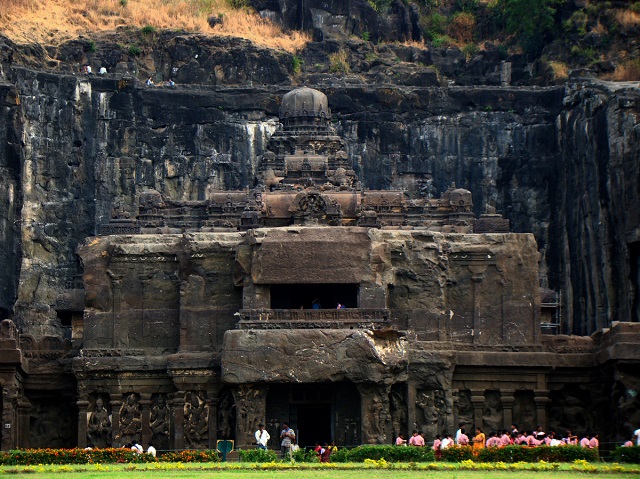
Kailasa Temple is the 16th structure in the complex of 34 monasteries and temples in the Ellora caves, located in the cliffs of Aurangabad, Maharashtra, India. This complex of structures was dug side by side within a 2 km area of a basalt cliff in the Sahyadari valley.
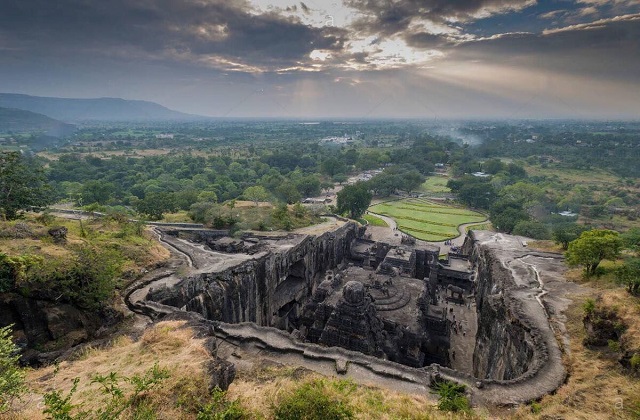
The temple was built to worship Lord Shiva in Pallava style and has similarities with Dravidian architecture. This place was started to be built in the 8th century by King Rashtrakuta Krishna I. According to archaeologists, to complete this project, more than 400,000 tons of rock and soil were carved and transported to other places. It is very likely that it took ancient people with primitive labor tools centuries to complete this great project. People still cannot explain how ancient people were able to separate giant boulders from a rocky mountain over 30 meters high with such perfect proportions.
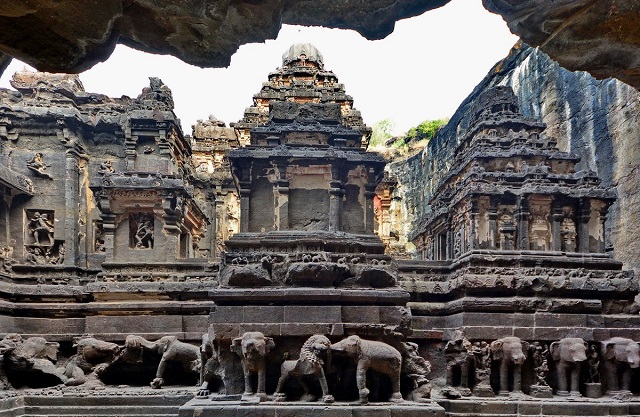
Kailasa Temple is surprising because the entire structure was created by vertical excavation, meaning the workers had to dig and chisel the stone blocks from top to bottom. Historians and architects were surprised to discover such a magnificent and complex complex. However, in history there is no record of the construction of this massive project. Some people also say that Kailasa temple was only built within 18 years.
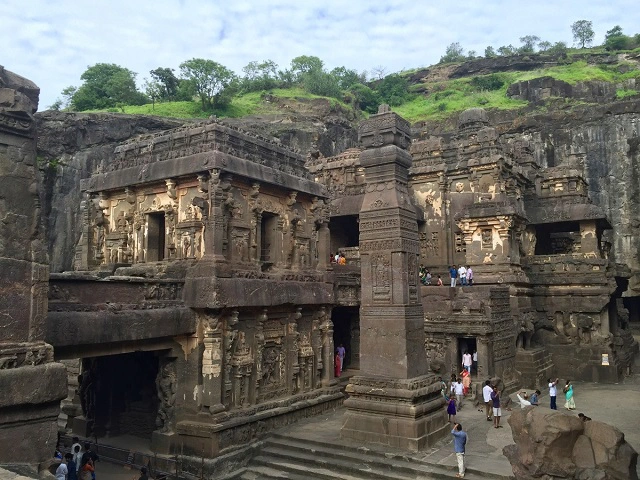
The entire Kailasa temple is twice as large as the Parthenon temple in Greece. This is one of the largest architectural works in the world, comparable to the Taj Mahal. This is also the only structure created by carving directly into the mountain. Through traces of chisels on the stone wall, scientists believe that the tools the ancients used to create this masterpiece only included chisels, hammers and sharp objects.
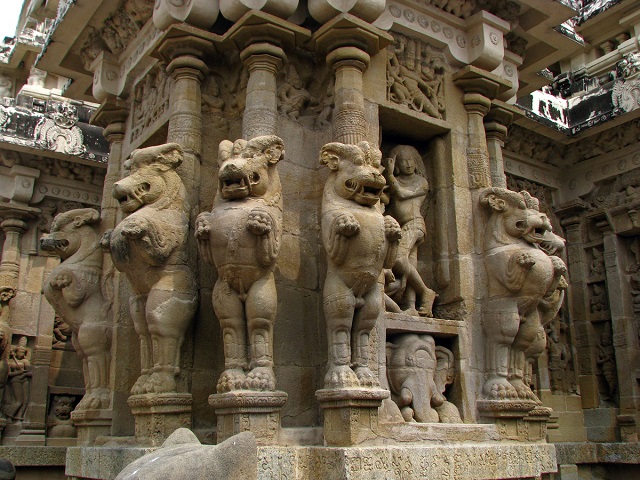
Kailasa Temple is sometimes also called Kailashnath Temple because it is designed to resemble the sacred Mount Kailash in Tibet, believed to be the residence of Lord Shiva. The temple has a square top with meticulously carved details. In the courtyard, there is a central worship area dedicated to Shiva, the supreme deity symbolizing regeneration and destruction in Hinduism. Scientists said that initially this structure was covered with a thick layer of white plaster to make it look like a mountain covered with snow. However, to this day this layer of plaster no longer exists.

Majestic and magnificent as it is, Kailasa temple also had to go through a dark period. In 1682, King Mugahl Aurangzeb – a devout Muslim – ordered the destruction of thousands of Hindu temples including Kailasa temple. According to historical records, more than 1,000 people worked continuously for 3 years to destroy this temple.
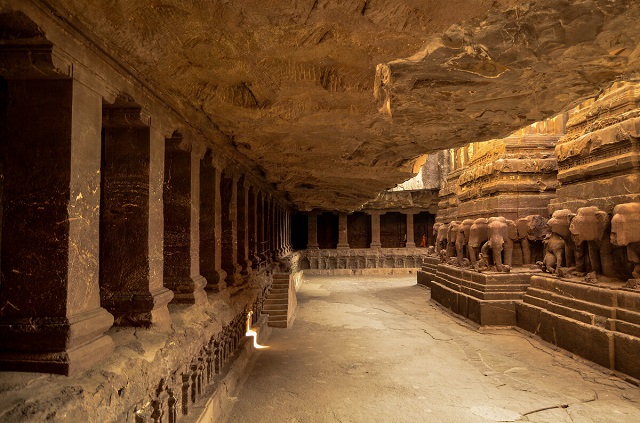
However, they only caused very minor damage, with only a few statues and reliefs being broken and deformed. Realizing that it was impossible to completely destroy Kailasa temple, King Aurangzeb finally had to abandon this plan. Hindus believe that it was the power of the gods that prevented the temple from being destroyed.

Not only has architectural value, Kailasa Temple is also home to thousands of sculptures, drawings and inscriptions that demonstrate the artistic and philosophical richness of ancient Indian civilization. There is a stone tablet engraved with the content of the epic epic Ramayana. It is estimated that today there are still about 32 million Sanskrit carvings here that have not been translated.






